Inflation in Canada is a topic that’s discussed quite a bit.
Along with the word “recession,” inflation can seem like a scary subject. However, most of the time it’s generally not something you have to worry about.
Here’s everything you need to know about inflation, how it affects you, and how to protect yourself.
Never miss an amazing deal again + get our bonus 250+ page eBook for FREE. Join 50,000 other Canadians who receive our weekly newsletter – learn more.
What is the current inflation rate in Canada?
Inflation is defined as the decline in the purchasing power of a unit of currency over time.
With the exception of 2 disastrous years (2009 and 2020), inflation has been between roughly 1% and 3%. We had slightly higher inflation during the boom period of 2000 – 2008. In the 2 disastrous years, inflation was much lower (0.23% and 0.79% respectively).
What is real GDP growth? It’s basically the rate at which the economy grew, based on the countries’ gross domestic product (which accounts for inflation).
Here are the numbers going back to 2008, along with the real GDP growth for the same year.
| Year | Inflation Rate | Real GDP Growth |
|---|---|---|
| 2008 | 2.37% | 1.01% |
| 2009 | 0.30% | -2.93% |
| 2010 | 1.78% | 3.09% |
| 2011 | 2.91% | 3.15% |
| 2012 | 1.52% | 1.76% |
| 2013 | 0.94% | 2.33% |
| 2014 | 1.91% | 2.87% |
| 2015 | 1.13% | 0.66% |
| 2016 | 1.43% | 1.00% |
| 2017 | 1.60% | 3.04% |
| 2018 | 2.27% | 2.43% |
| 2019 | 1.95% | 1.86% |
| 2020 | 0.72% | -5.31% |
Data for the inflation rate is here and GDP growth is here.
You can see how inflation and a recession are intertwined farther below.
How has COVID impacted inflation in Canada?
Supply-side shocks tend to cause Consumer Price Indexes to jump, so they look like inflation in the short-term. The key difference (which is being debated by economists) is whether this jump in prices is permanent.
- If it’s purely inflation, these price changes are permanent.
- If it’s purely a temporary supply-side shock, then a price correction is coming that will cause prices to drop when supply catches up.
Most economists think we are mostly in the second category, but it’s likely that there will be some higher-than-normal inflation over this period when all the dust settles.
The COVID pandemic has affected consumer prices in the following ways:
- Lockdowns slow down production, creating a scarcity in goods and causing prices to jump.
- People getting sick (especially from long-COVID) take them out of the workforce for a considerable amount of time, which also slows down production.
- Increased stress on those still working is causing burnout, and increased government assistance is giving them the option to say “no” so people are starting to quit their jobs and look for better ones.
- The “great resignation” is driving up demand for work, giving the average person more bargaining power during a job hunt to get paid more; meanwhile, employers need to be more competitive to find staff, which means they often have to raise prices to make ends meet.
Most of these inflationary causes are temporary and will result in a correction as we start coming out of “pandemic mode.”
However, the “great resignation” and the increased bargaining power of workers will likely cause some permanent inflation to the benefit of many workers (whose pay is going up faster than inflation) but to the detriment of everyone else (particularly managers, shareholders, and workers who didn’t use their new bargaining power).
What is inflation? 4 facts you should know
So what exactly is inflation, beyond being a number that states the rising price of goods?
It is different from (but often conflated with) supply and demand shocks that drastically increase the cost of a certain small set of goods. Inflation is instead characterized by the overall permanent price increase of essentially all goods and services, and hence the decline in purchasing power of currency itself.
At the time of initial writing (December 2021), we’re going through a supply-side shock that is driving up the prices for everything, but economists are disputing how permanent these price hikes are going to be.
1. How inflation is calculated
First, how is inflation calculated?
Inflation is calculated by tracking the average price of a standard set of goods called a “basket.” These baskets are used to define a price index.
A price index’s basket can be as sophisticated as the one used in the Consumer Price Index, which samples a very wide range of goods and breaks them down into well-defined categories.
On the flip side, a price index’s basket can be as humorously simple as the Big Mac Index which merely tracks the price of a Big Mac hamburger.
An index will typically result in an average cost (represented below as “c”). Inflation is then calculated by taking the increase in average cost over time and dividing it by the initial cost.
Inflation = (c2 – c1) / c1
Typically, this is done on an annual basis, so inflation from 2020 to 2021 would be:
Inflation = (c2021 – c2020) / c2020
Want to calculate what inflation was at any time period? Check outthe Bank of Canada’s Inflation Calculator.
2. What causes inflation
Determining the cause of inflation is a very difficult task, because there are many different possible causes – sometimes even multiple causes at once.
Here are some commonly quoted causes of inflation.
Human psychology and loss-aversion (A.K.A. sticky wages)
John Maynard Keynes coined the term “sticky wages” to describe how people tend to fight against wage decreases, so during tough times, employers use other means to make ends meet – like a mixture of layoffs and raising prices depending on market conditions.
This means that instead of directly reducing wages, the overall economy tends to respond by a more indirect subtle method of decreasing employment and raising the price of everything.
However, because economies tend to favour full employment, when the demand for labour bounces back, higher wages are demanded to pay for the increased price of everything, and as a result, wages are permanently increased to meet the new “stuck” higher prices.
Thus, an economic downturn cycle often results in a permanent increase in the price of pretty much everything.
While this can explain a jump in inflation during an economic disruption, the typical gradual increase in prices is more likely a cat-and-mouse game where:
- companies try to squeeze more profits by increasing prices and employee output, and/or
- employees try to squeeze more wages from employers through negotiations and changing jobs.
This squeezing is always in an upward direction, as it’s easier to get more for yourself than it is to cause everyone else to get less. Hence this squeezing tends to cause upward trends in both wages and prices, hence, gradual inflation.
Supply shock over key economic inputs
A good example of supply shock is the inflation in the 1970s, much of which is attributed to:
- peak oil,
- the monopolization of oil production by OPEC, and
- the organization exerting its economic influence.
Oil, a key economic input, suddenly became much more difficult to obtain.
Because the entire western economic engine was fed with oil, an increase in oil price basically increased the cost of everything until the rest of the economy learned to use oil more efficiently.
Labour shortages, especially in key critical economic sectors, can also drive up wages and have trickle-down effects on the cost of everything that sector touches. This is currently happening with the supply-chain labour shortage.
Tight housing markets can also cause localized inflation by putting pressure on workers. High housing prices in a particular area would require people to have high paying jobs to be able to live there. This can result in a net loss of young people who move to more affordable locations, slowing down the labour supply, and making it harder to access goods and services.
As wages in these areas increase, businesses have more bargaining power to increase their prices for convenient access to goods and services in an expensive location.
Printing off too much money (hyperinflation)
Hyperinflation is a massively disruptive economic event and is a frequent cautionary tale against governments printing off too much money too quickly.
There are a couple of noteworthy examples of this. The first is Germany (Weimar Republic) in 1922.
Germany financed its war effort in WW1 almost entirely by borrowing. After the war ended, it was saddled with massive debts due to the repayment requirements stated in the Versailles Treaty.
Germany couldn’t pay its debts, so it printed off unlimited money to buy foreign currency at any price to pay off its debt, and thus their currency (Marks) were severely devalued.
In 1914, 1 U.S. dollar was worth about 4.2 Marks.
But in 1923? 1 U.S. dollar bought an astounding 4.2 × 1012 Marks.
One other example is from Zimbabwe between 2004 and 2008.
In 1990, failed land agreements resulted in drops in food production and foreign investment.
Several multinational companies started hoarding goods, preventing them from being sold in the market. As a result, Mugabe’s government started printing more notes with higher face value, and from 2004 – 2007, the currency was re-denominated three times.
The result? In September 2008, 1,000 Zimbabwe Dollars was equal to 1 U.S. dollar.
But 5 months later, in Feb 2009, it took 3 x 1414 Zimbabwe dollars to make 1 U.S. dollar.
Zimbabwe would eventually abandon their currency.
3. How inflation affects you
Unless you’re among the people who are able to demand better compensation during an inflationary period, inflation is going to leave you behind. It is the result of a lot of people using their bargaining power against you.
Increased prices
Real inflation (not just a temporary shock) will result in permanent higher prices for everything. Unless your income is increasing at a similar rate or more, it’s going to be harder for you to keep making ends meet.
Savings worth less
Inflation will “eat away” at your investment return rates, and if it’s high enough, inflation can even make your return rates negative in real terms.
Say your savings are giving you an annual return rate of 3% but the inflation rate is 4%. Your real rate of return is actually -1%, causing you to lose money even when it looks like you’re making money.
4. What is deflation?
If inflation is bad, is its opposite (deflation) good? The real answer depends on what causes it.
Good deflation comes from an improvement in productivity or technology. A very well known deflationary market is in computers and electronics. Our ability to make better and better computers and electronic devices means that the cost of computing power and storage is always decreasing exponentially.
The technical specs for a brand-new computer worth $2,000 five years ago would not demand nearly that price today, because our better technology makes it much easier to meet those specs.
Deflation can also come as a correction against a high inflationary period. Being able to increase supply of a key economic input that was previously in short supply will result in a deflationary correction.
However, sometimes deflation comes from a bursting asset bubble. One such notable case was the deflation that happened during the 2008 financial crisis where home prices fell drastically.
The differences between inflation and a recession
Though inflation and recession are different, they can also be related in some key ways.
Here are the differences between a recession and inflation.
Inflation vs. recession – how they differ
Before we start talking about how inflation and recessions are related but different, we will need to know the basic difference:
- Inflation is the permanent cost of rising goods.
- Recession is the decline in real economic productivity (which is adjusted for inflation).
What is a recession exactly?
A recession is typically defined as a decline in real gross domestic product (GDP) for 2 successive quarters. Real GDP is always adjusted for inflation:
Real GDP Change =(1 +[Nominal GDP Change]) / (1 +[Inflation])
As an example, let’s say that for 2 quarters, our nominal GDP rose by 2% but inflation was 4%. In this case, the real GDP is:
Real GDPChange =(1 +[0.02]) / (1 +[0.04]) – 1 = 0.9808-1
Real GDP Change= -1.92%
So if the nominal GDP growth is lower than inflation, then it results in decline in real GDP. In other words, a recession.
How inflation and recession are intertwined
As we have previously mentioned, inflation can tip the balance of real GDP into negative territory if it’s higher than the nominal GDP growth.
Supply-side shocks can result in a jump in prices and income for those who are in sudden demand, but if this price growth is purely inflationary, it will result in net negative real GDP.
On the other hand, demand-side shocks or drops in consumer confidence will often result in negative real GDP growth and deflation, as businesses need to cut prices to boost sales and cut costs by layoffs.
From the 2 charts that trend real GDP and inflation (and some summary data below), we see that drops in real GDP tend to coincide with much lower inflation rates. This means that over recent years, deflation is often coupled with recessions.
This points to the key driver of these GDP being a drop in consumer confidence (as opposed to a supply shock).
Want to learn more about our latest recessions?Here are all the details.
Pros and cons of inflation in Canada
When it comes to inflation, there’s a big pro and a few cons to consider.
Main pro of inflation: Opportunity to make more money
When inflation is present, it often means that someone, somewhere has the bargaining power to raise prices. This means that someone is getting in on an opportunity to grab a bigger piece of the economic pie.
In this case, it’s often essential frontline workers (particularly in healthcare and the supply chain) who are stressed, quitting, and demanding better working conditions.
With the great resignation, it means that employers are particularly stressed about people leaving and are scrambling to fill holes left by departures. If you’re an employee, it means you might be able to look for better paying jobs or even negotiate a raise.
The cons of inflation in Canada
If you aren’t able to negotiate a raise or find a better job, the rising costs of everything is going to make life harder for you.
Worse yet, if you’re someone who employs people or is working in an HR department, this is going to be a difficult time. Inflation is raising peoples’ salary expectations and giving them more opportunity to look elsewhere and the headache of resignations and trying to fill gaps is real.
You will need to really keep connected to your hired talent and show ways of appreciating them to make sure that someone else isn’t going to poach them from under your nose.
How to protect your cash from inflation
So as inflation increases prices, it leads to a drop in the value of your money.
How can you stay ahead? The biggest thing to do is to not just let your money sit around in a chequing account. Slowly but surely, it loses value over time.
To offset that loss, you need your money to grow.
One way you can do that is with a high interest savings account. But we’re talking true high interest savings accounts. The big banks have accounts they call “high interest”, but the interest earned is quite paltry, often barely scraping 0.05%.
One example of an actual high interest savings account is the Neo Money account. You’ll earn a high level of interest on every $1 in your account.
Neo Everyday Account
But savings accounts are almost no-risk, which means relatively low reward.
If you want your money to grow even more, you’ll need to invest it. Luckily, there are plenty of ways you can invest your money.
An easy and low cost way is with a robo advisor. You deposit money into your account and an algorithm invests it for you. Because most of it is automated, there are often much lower costs associated than with a dedicated financial advisor.
One of the best robo advisors in Canada is Questwealth, which charges some of the lowest fees around.
Questwealth
Your turn
Talk of inflation can be a little scary, but for the most part, it’s nothing to worry about.
What are your thoughts on inflation? Any questions?
Let us know in the comments below.
FAQ
What is inflation?
Inflation is defined as a decline in the purchasing power of currency over time. It is often conflated with an increase in price of certain goods.
What is the current inflation rate in Canada?
For the most recent data, in 2020 the inflation rate was 0.7%. In most years, it hovers between 1% and 3%.
How does inflation affect you?
The biggest thing inflation does is lower the value of your money. Here are a couple of things you can do to counter inflation.
Are inflation and a recession the same thing?
Inflation and a recession are different things. Inflation is the permanent cost of rising goods, and a recession is a decline in economic productivity (which is adjusted for inflation). They can be related, as high inflation can lead to negative growth, the cause of a recession.
creditcardGenius is the only tool that compares 126+ features of 231 Canadian credit cards using math-based ratings and rankings that respond to your needs, instantly. Take our quiz and see which of Canada's 231 cards is for you.




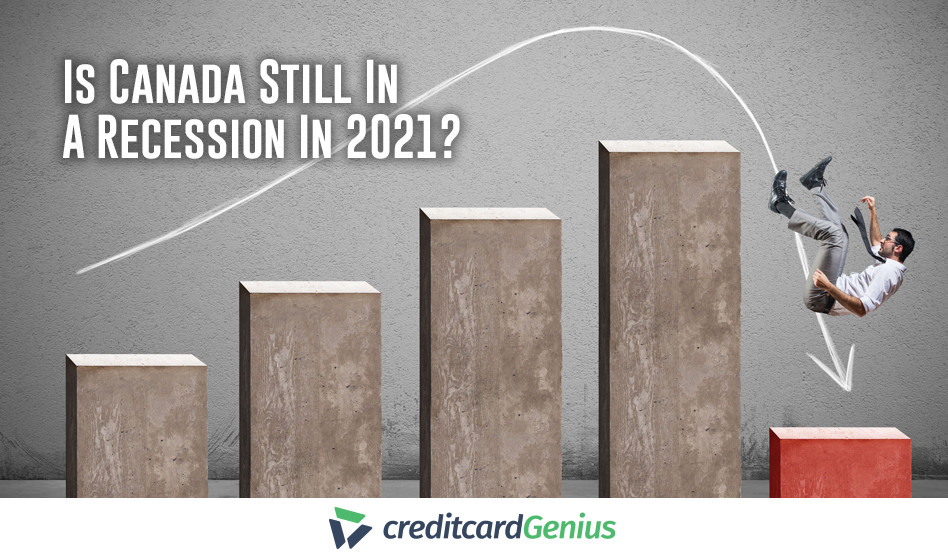




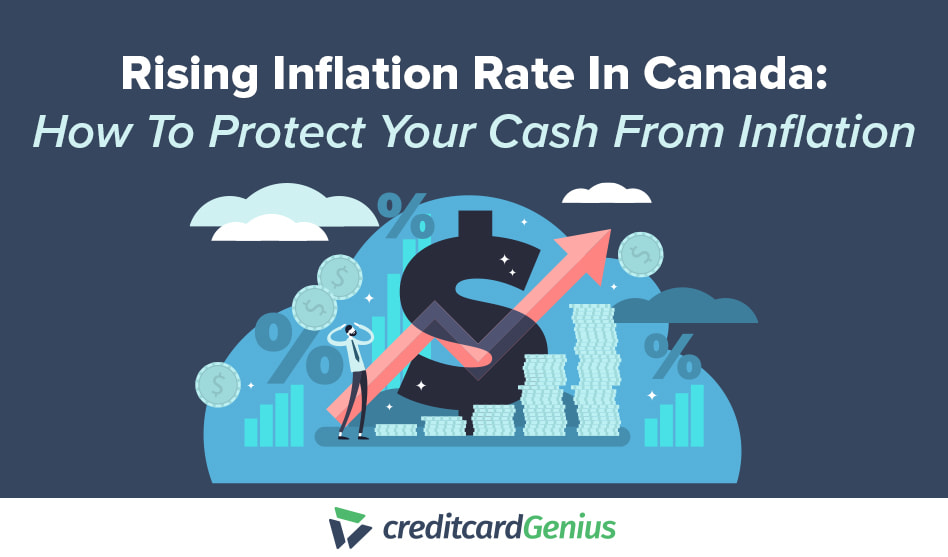
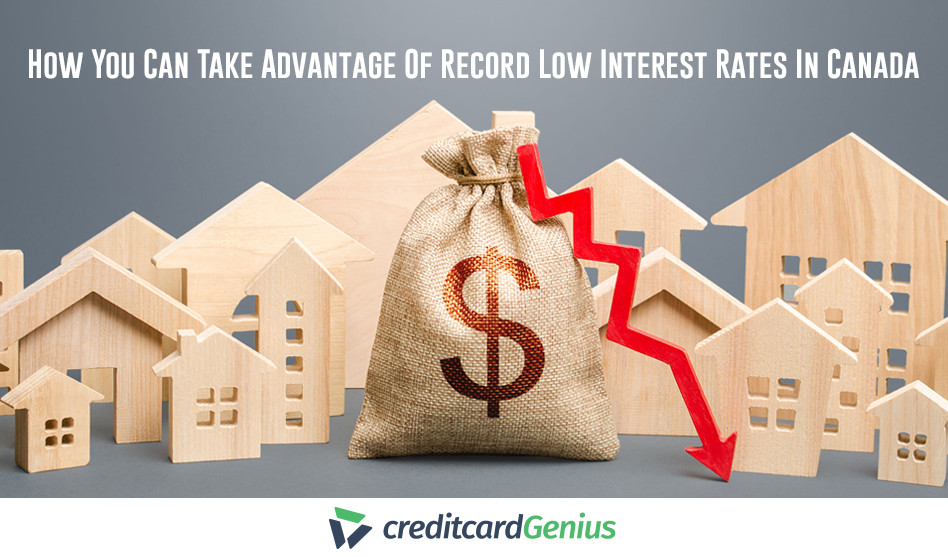


 GC:
GC: 

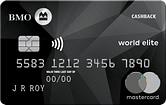







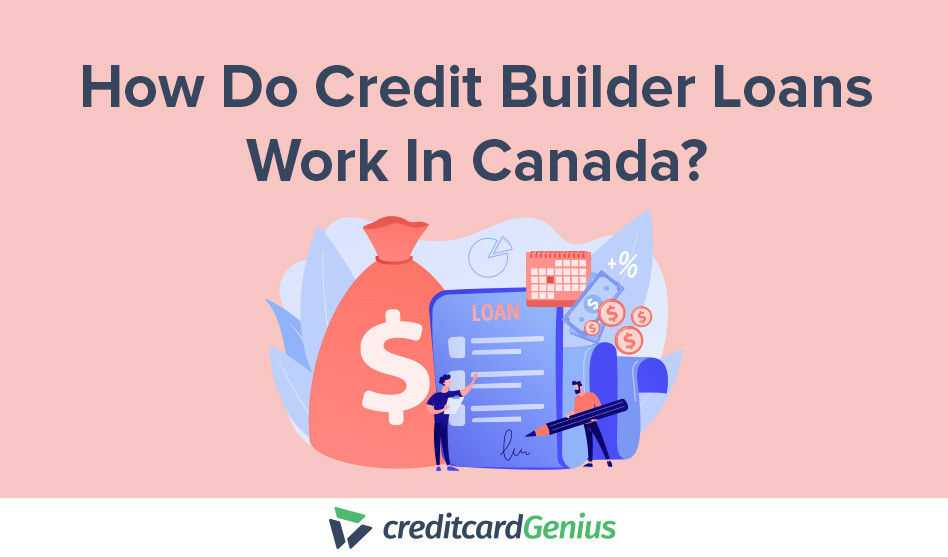



.png)






















 $100 GeniusCash + Earn up to 15,000 Welcome Bonus Membership Rewards® Points.*
$100 GeniusCash + Earn up to 15,000 Welcome Bonus Membership Rewards® Points.*
Comments
Leave a comment
Required fields are marked with *. Your email address will not be published.